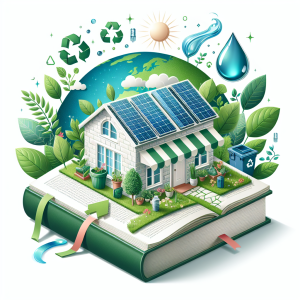Turning trash into treasure is an inspiring concept that has gained significant momentum amid growing environmental concerns and the urgent need to reduce waste. Innovative recycling projects are at the forefront of this movement, transforming discarded materials into valuable resources and unique products. This approach not only alleviates the pressure on landfills but also fosters creativity, supports sustainability, and encourages eco-friendly practices worldwide.
One of the most fascinating recycling projects transforming the landscape of sustainability is the creation of eco-bricks. Eco-bricks are made by filling used plastic bottles with non-biodegradable waste, such as plastic bags and wrappers. This process starts by ensuring the plastic bottles are thoroughly cleaned and dried. The bottles are then packed tightly with other plastic waste that cannot easily decompose, creating a dense, reusable building material. These bricks have been used in various countries to construct schools, community centers, and even homes. This innovative project not only addresses the pervasive issue of plastic pollution but also provides affordable building solutions in economically disadvantaged regions.
Similarly, glass recycling projects have emerged as a powerful example of turning trash into treasure. Used glass containers are collected, sorted, cleaned, and crushed into a material called cullet, which is then melted and molded into new glass products. This process is incredibly energy-efficient compared to manufacturing new glass from raw materials, as cullet melts at a lower temperature. Beyond recycling into new containers, artists and designers are using reclaimed glass to craft stunning jewelry, mosaics, and decorative items, adding aesthetic value while promoting sustainability.
Electronic waste, or e-waste, presents another burgeoning area for innovative recycling projects. As technology advances, devices quickly become obsolete, leading to a surge in electronic waste. Projects focused on e-waste recycling aim to extract valuable metals like gold, silver, and copper from discarded gadgets. These metals can be refurbished and reused in new devices, thus reducing the demand for mining new resources and minimizing the environmental footprint. In addition to metal recovery, certain creative enterprises repurpose electronic components, such as circuit boards, into unique art pieces and jewelry, turning components that might have polluted ecosystems into captivating items of beauty.
Clothing and textile waste is a critical issue, with vast amounts ending up in landfills annually. Innovative recycling projects in the textile industry involve upcycling, where old garments and fabrics are transformed into new clothes, accessories, or household items. This not only reduces waste but also diminishes the need for new raw materials, such as cotton and synthetic fibers, which have environmental costs related to water use and chemical pollution. Brands and designers dedicated to upcycling are pioneering stylish collections made entirely from recycled materials, appealing to eco-conscious consumers. Additionally, some projects focus on innovative fabric recycling techniques that break down fibers to produce new yarns, effectively closing the loop in textile production.
Paper recycling is an established practice but continues to evolve with innovative initiatives. Beyond recycling paper into more paper, projects now refashion waste paper into entirely new products. Plantable paper is a development where used paper is embedded with seeds. Once planted, the paper degrades, leaving behind blossoming plants or vegetables. This concept serves not only as an eco-friendly product but also as an educational tool to promote environmental awareness.
Biodegradable waste is another promising area for recycling projects, particularly in the realm of composting. Organic waste, including food scraps and yard waste, can be composted to create nutrient-rich soil additives that support sustainable agriculture and gardening. Community-based composting projects collect organic waste from households and businesses, diverting it from landfills and turning it into valuable compost. This enriches soil, reduces methane emissions from landfills, and enhances local food systems by promoting urban gardening and farming practices.
In the realm of metals, innovative recycling projects are exploring how to transform scrap metal into new forms. Artists and craftsmen are harnessing the potential of discarded metal objects, such as discarded car parts or appliances, to create sculptures and functional items. This not only reclaims otherwise wasted materials but also gives metal artifacts a second life as pieces of art, interior design elements, or even new machinery components.
Plastic pollution has spurred myriad innovative recycling projects aimed at tackling this pervasive issue. Chemical recycling processes are being developed to break down plastics into their original components, allowing them to be reused in producing new plastic products. Meanwhile, the rise of biodegradable plastics derived from plant materials is another frontier in reducing the lasting environmental impact of traditional plastics. Entrepreneurs and scientists are collaborating to scale these technologies, making sustainable and circular use of plastics a viable global practice.
Worldwide, communities are fostering local recycling initiatives that combine environmental, social, and economic objectives. These grassroots projects often focus on educating the public, raising awareness about proper waste sorting, and encouraging participation in recycling programs. By involving local communities, these projects build resilience, create jobs, and stimulate local economies while minimizing waste.
These innovative recycling projects illustrate the potential to revolutionize how we manage waste. By creatively reimagining the lifecycle of materials, we move closer to a circular economy where resources are continually repurposed and reused. As these projects expand and inspire broader adoption, they offer a beacon of hope for a more sustainable and environmentally harmonious world.

